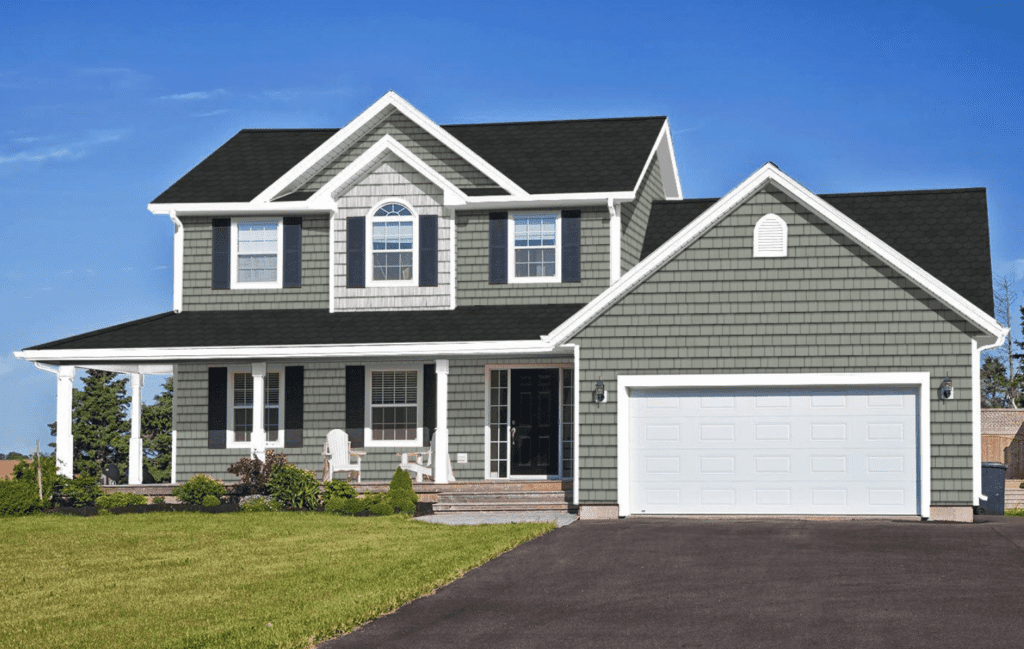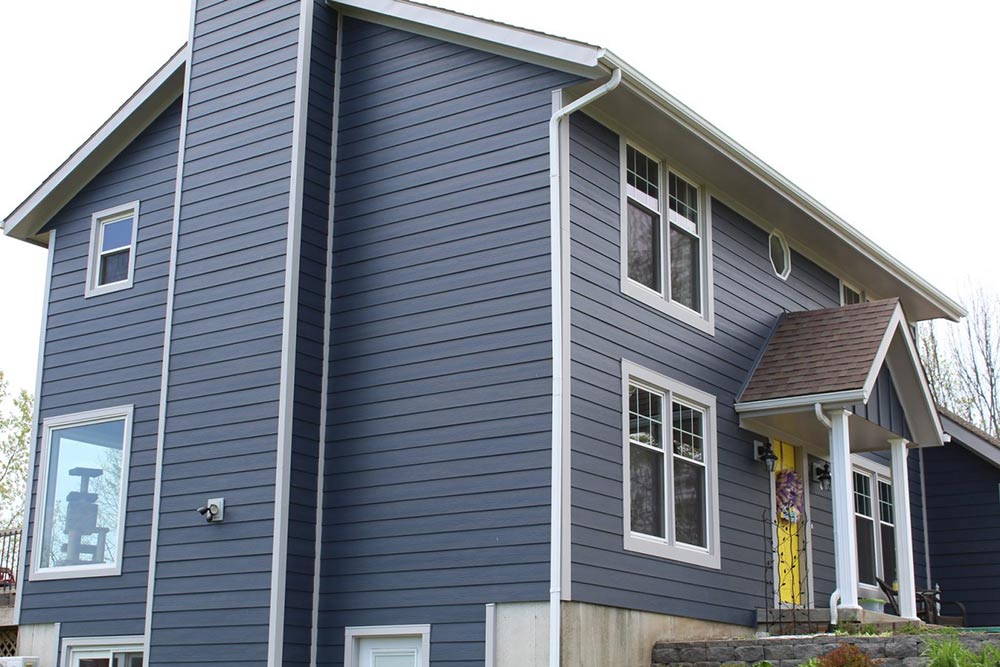Top siding contractors: Steps to Get Your Home for New Siding Installation
Baltimore house siding professionals: Outside Cladding Can Significantly Enhance The Look And Defense Of Your Home
Exploring the Spectrum of Siding Products
When it pertains to siding, the options can seem like a labyrinth. Each product carries its own personality, efficiency quirks, and appeal. Ever wondered why some homes boast that rustic wooden attraction while others shine with smooth vinyl panels? Let's peel back the layers and dive into the most popular siding options that shape our areas.
Wood Siding: The Timeless Storyteller
Wood has a nearly poetic connection with homes; it ages like fine white wine, getting character through the seasons. Beware, the love of wood needs attention. It's susceptible to wetness and bugs, so regular maintenance is the rate of admission. The heat and texture it imparts? Irreplaceable.
Vinyl Siding: The Chameleon of Outsides
If adaptability had a poster child, vinyl siding would be it. This material is available in a rainbow of colors and textures, simulating wood, stone, or perhaps brick with surprising fidelity. It's low-maintenance, long lasting, and resistant to fading-- ideal for property owners who choose to spend weekends exploring rather than scraping paint.
Fiber Cement: The Quiet Strength
Fiber cement typically flies under the radar but loads a punch. Composed of sand, cement, and cellulose fibers, it resists fire, insects, and rot. Think of a siding that looks like wood but chuckles in the face of termites and weather. It's a favorite amongst those who look for durability without sacrificing visual appeals.
Metal Siding: The Modern Minimalist
Aluminum and steel siding have surged in popularity, especially for modern homes. Their sleek lines and reflective surfaces offer a modern twist. Plus, metal siding can shrug off damages and scratches much better than you 'd expect. Curious about a siding that's both commercial and inviting? Metal might be your answer.
Other Noteworthy Materials
- Stucco: Perfect for Mediterranean vibes, it provides a textured surface that's both durable and energy-efficient.
- Brick Veneer: A timeless choice, providing durable security with traditional beauty.
- Engineered Wood: Integrates the charm of wood with boosted resistance to decay.

Comparison Table of Common Siding Types
| Product | Sturdiness | Upkeep | Look | Expense Effectiveness |
|---|---|---|---|---|
| Wood | Moderate | High | Natural, warm | Medium |
| Vinyl | High | Low | Differs extensively | High |
| Fiber Cement | Very High | Low | Wood-like | Medium |
| Metal | High | Low | Modern, streamlined | Medium |
| Stucco | High | Medium | Textured | Medium |
Picking the right siding typically comes down to a mix of personal taste and useful needs. Your home's exterior isn't simply about protection-- it's a canvas showing your special story. So, what does your siding say about you?
Mastering the Art of Siding Installation
Ever noticed how a home's outside can either whisper or scream its character? The setup methods behind siding hold the trick to that subtle or strong declaration. When it concerns siding, precision is non-negotiable; a single misaligned slab can invite wetness or let cold drafts sneak in, undermining years of effort.
Preparation: The Unsung Hero
Before the very first nail hits the wood or vinyl, comprehending the substrate is vital. Is the sheathing level!.?. !? Exist gaps behind the old siding that could trap water? Ignoring these information often causes warping or early degeneration. A skilled installer will constantly:
- Check and repair the sheathing surface.
- Set up a top quality weather-resistant barrier to eliminate moisture infiltration.
- Think about adding furring strips for enhanced airflow in cases of irregular walls.
Nailing Strategies: More Than Simply Hammer and Nail
One might believe that nailing is uncomplicated-- hit the plank, secure it, done. However each siding product requires an unique technique. Wood siding needs nails long enough to permeate the sheathing but not so deep that they split the plank. Vinyl, on the other hand, demands a fragile balance; nails ought to permit expansion and contraction to avoid buckling.
Here's a fast rundown of professional nailing suggestions:
- Use galvanized or stainless steel nails to resist rust.
- Leave a minor gap in between nail head and siding surface area to accommodate motion.
- Area nails evenly-- too close and the siding can break; too far and it might loosen up.
Joint Methods and Overlaps
Seams can be the Achilles' heel of siding installation. Have you ever seen siding panels that look like they're gradually removing? Typically, it is because of improper overlapping or badly sealed joints. Embracing a shingle-style overlap, where each panel covers the one listed below by about an inch, produces a natural water-shedding result.
Pro pointers include:
- Stagger seams in between courses to reduce water intrusion.
- Usage flexible, paintable caulking moderately to seal corners and joints.
- Guarantee that corner posts are securely fitted but still enable material movement.
Working with Corners and Trim
Corners aren't just visual information-- they're tension points. Setting up J-channels and corner trims properly demands patience and ability. A typical trap is cutting corners too tight, which restricts siding expansion and results in warping or bubbling. Permitting a little gap and then sealing with an appropriate trim helps preserve integrity with time.
Advanced Techniques: Beyond the Basics
| Technique | Purpose | Benefit |
|---|---|---|
| Rain Screen Setup | Develops an aerated cavity behind siding | Improves moisture management and extends siding life-span |
| Butt Joints with Flashing | Avoids water ingress at panel ends | Boosts durability and decreases maintenance |
| Custom Furring Strip Layouts | Makes sure even siding surface on unequal walls | Improves aesthetic appeals and siding performance |
Have you ever questioned why some siding tasks look perfect for years, while others show wear after a couple of seasons? The secret lies not simply in the products but in the skill of installation. Every cut, every nail, every overlap narrates-- a story of workmanship, weather-readiness, and attention to detail.
Maintenance and Repair Tips for Siding
When you glimpse at your home's exterior, the siding frequently bears the force of time and weather. But have you ever stopped briefly to think of what prowls behind that captivating facade? Wetness can sneak in through small fractures, turning a small blemish into an expensive headache. That's why routine assessment isn't simply excellent practice-- it's vital.
Envision this: a little chip in your vinyl siding, apparently insignificant, becomes the entry point for water throughout a storm. Weeks later, covert rot festers underneath, calmly deteriorating your home's structure. This is where a specialist's eye and prompt action save you from prolonged damage.
Identifying Trouble Early
- Search for staining or warping, which typically signals water seepage.
- Listen for hollow sounds when tapping the siding; they might reveal loose panels or underlying decay.
- Check caulking around windows and doors-- over time, it can crack and jeopardize the seal.
Lots of house owners underestimate the value of cleaning their siding. Dirt and mildew don't simply mar the look; they accelerate wear. Using a soft brush with a mild cleaning agent keeps surfaces fresh without harming the material. Avoid high-pressure cleaning unless you understand the siding type can handle it-- otherwise, you risk requiring water behind the panels.
Simple Repairs That Make a Distinction
- Fill minor fractures or holes with premium exterior-grade sealants to prevent water intrusion.
- Replace harmed panels immediately to keep the siding's integrity and curb appeal.
- Repaint wood siding every couple of years, but do not just slap on paint-- sand and prime first to guarantee enduring adhesion.
Here's a nugget often overlooked: when repairing, always match the siding's growth homes. Disregarding this can trigger panels to buckle or gaps to form later, undoing your efforts.
Seasonal Siding Care
| Season | Upkeep Focus | Pro Tips |
|---|---|---|
| Spring | Examine for winter season damage; tidy mildew | Use a vinegar option for mildew elimination-- environment-friendly and effective |
| Summer season | Check and repair caulking; repaint if needed | Paint during mild temperature levels to avoid fast drying and breaking |
| Fall | Clear gutters to prevent water damage | Cut trees to prevent branches scraping siding during winter season storms |
| Winter | Display for ice dams and snow accumulation | Usage gentle snow removal tools; avoid sharp items |

Ever wondered why some siding lasts decades while others falter rapidly? The response frequently depends on the subtle nuances of upkeep. It's not practically responding to noticeable flaws however expecting how your home's environment will engage with its outside. By mastering these repair and upkeep tactics, you transform siding from a simple protective shell into click here an enduring architectural property.
Ecological Impact and Sustainability
When considering siding, the concern isn't simply how it looks or lasts-- it's how it lives with the planet. Have you ever stopped briefly to think about the causal sequence your option of exterior product has on the environment? The manufacturing procedure alone may shock you. For circumstances, traditional vinyl siding, while popular for its sturdiness and low maintenance, often involves petrochemical derivatives that stick around in communities long after disposal.
Wood siding, on the other hand, provides a sustainable resource, however it's not without its own environmental footprint. The carbon expense of collecting old-growth trees and the energy used in treatment and transport can be considerable. Yet, when sourced responsibly, wood acts like a carbon sink, locking away CO2 rather than launching it.
Sustainability Metrics to Consider
- Embodied energy: The overall energy consumed during extraction, production, and installation.
- Longevity and upkeep frequency: How often will the siding need repairs or replacement?
- End-of-life recyclability: Can the product be repurposed or does it end up in land fill?
- Thermal performance: Does the siding contribute to energy efficiency, reducing heating and cooling demands?
Let's not overlook the typically undervalued effect of siding color and finish. Lighter tones reflect sunlight, minimizing heat absorption and lowering cooling costs in warmer climates. Darker siding might increase energy loads however can be advantageous in cooler regions seeking passive solar gain.
Specialist Tips for Eco-Friendly Siding Choices
- Go with siding made from recycled material whenever possible; it reduces need for virgin products.
- Look for items with third-party sustainability certifications to confirm environmental claims.
- Consider fiber cement siding, which blends cement, sand, and cellulose fibers-- providing resilience with less ecological toll than vinyl.
- Guarantee proper insulation beneath siding to make the most of energy effectiveness, as siding alone isn't a thermal barrier.
- Keep your siding frequently; a well-kept exterior extends life expectancy and hold-ups replacement.
Remember the old farmhouse down the lane? Its weathered cedar siding has stood for over a century because it was crafted from locally sourced timber and kept with care, showing that sustainability isn't just about brand-new innovation-- it has to do with respect for products and environment. Could siding choices today echo that durability and eco-friendly mindfulness?